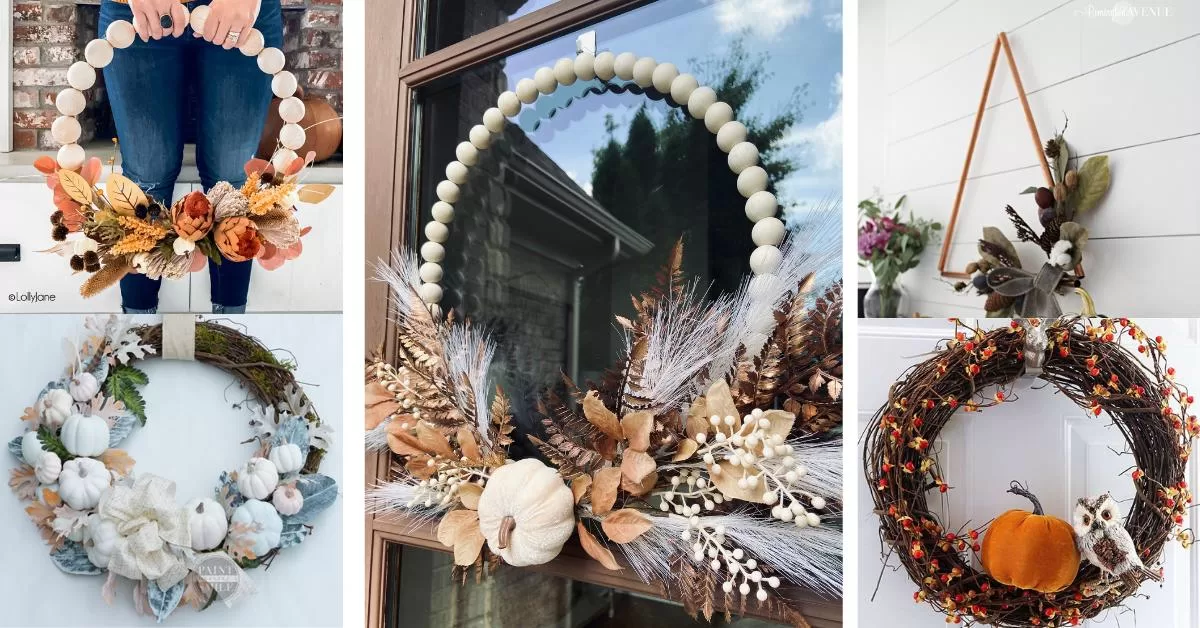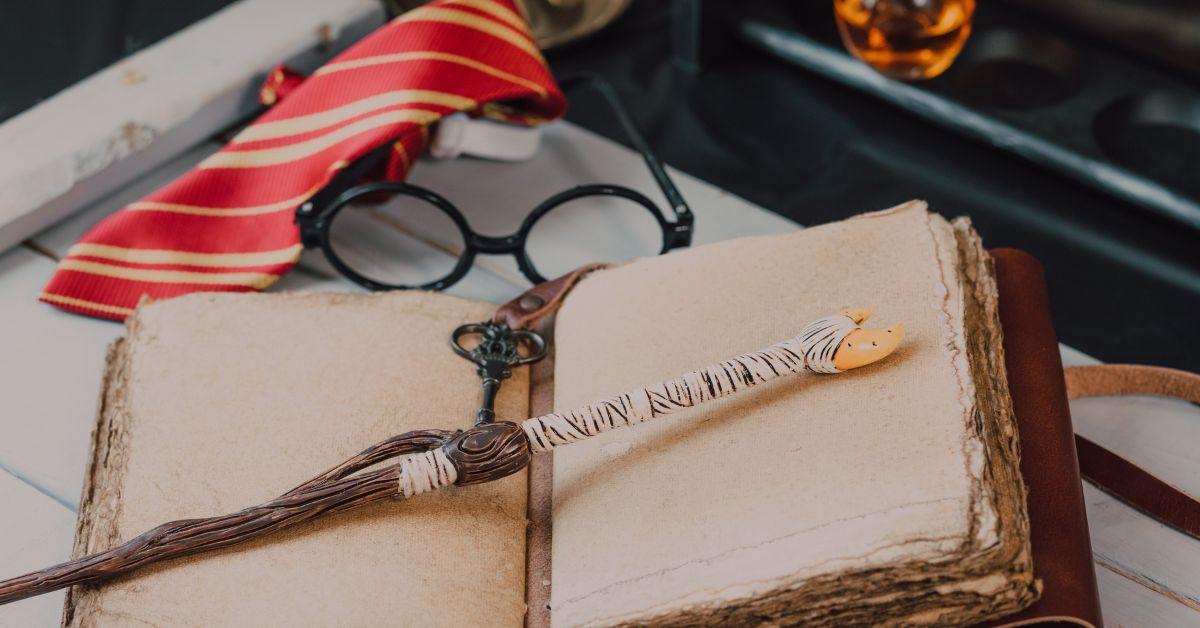DIY upholstery projects can seem intimidating to the average person, but it doesn’t have to be difficult. Here are my instructions and tips on how to reupholster an antique rocking chair!

This rocking chair was an absolute steal! At a charity sale event, I paid only $8 for this antique beauty. Despite the old and tattered fabric, the wood was in great shape and I thought it would make a good flip project. Little did I know that a few months later I would find out that I was pregnant – and this chair would be staying with me in the nursery!

This article may contain affiliate links. As an Amazon Associate, I earn from qualifying purchases at no extra cost to you. See my full disclosure policy here.
HOW TO REUPHOLSTER A ROCKING CHAIR: PREPARATION
PREPARE YOUR WORKSPACE
I always start a DIY furniture project by prepping my workspace. This means laying out plastic or drop cloths and having a respirator/mask, gloves, safety glasses, and my tools on hand. I also like to set my pieces at waist level on a woodworking table (or even a folding table) to minimize bending and straining.
CHOOSE YOUR FABRIC AND DETAILS
I spent an embarrassing amount of time choosing my fabric. Since this was a piece I’d be keeping and using for my baby boy’s nursery, I ultimately splurged on a high-quality “Folkland Admiral” fabric by Robert Allen. It fit my “boho-woodland” nursery theme perfectly, and I loved the bold, jewel-toned colors.

Regardless of print or style, I recommend an actual upholstery fabric over a thinner fabric that may wear or fade more easily over time. Here’s a great article on Picking the Perfect Upholstery Fabric that you may find helpful!
GET THE RIGHT TOOLS
Upholstery projects require a few handy tools.
- The staple gun is the most obvious. You can use a manual staple gun as long as it is powerful enough to drive 3/8″-1/2″ staples into wood and can reach into corners and crevices. Unfortunately, I had to use a pneumatic long-nose staple gun for this project since there was such little space between the wood and foam. The long nose on the staple gun made it possible to squeeze the staples between these crowded areas which wouldn’t have been possible with an ordinary staple gun. Take a good look at your rocking chair to determine which type you will need.
- Upholstery staple remover. Needle-nose pliers work most of the time, but occasionally you will need something able to wedge between metal and wood without damaging the wood, and a staple remover like this one is perfect. It will also come in handy to slip under crooked nailhead studs when you need to readjust them.
- Upholstery/Tack Hammer. This is essential! Using a regular hammer would be bulky and difficult and would end up damaging the wood near the studs.
These are the three main tools you’ll need, but you can check out my specific source list below:
MY SOURCE LIST
- 120, 180, and 220 grit sandpaper sheets
- Upholstery staple remover
- Staple gun (manual or pneumatic, depending on your needs)
- ½” staples
- Needle-nose pliers, various sizes
- Upholstery tack hammer
- Foam, batting, and burlap, depending on the condition of the old stuff
- Fabric: “Folkland Admiral” by Robert Allen
- Nail Head Upholstery Studs
- Jasco Green Odorless Mineral Spirits
- Stain of choice (I used a mix of Minwax Provencial and Pecan)
- Varathane Water-Based Polyurethane
HOW TO REUPHOLSTER A ROCKING CHAIR: STEP-BY-STEP
1. Disassemble all upholstery layers, working from the outermost layer to innermost.

This is important! You’ll want to remove each layer of material, starting with the outermost layer and working to the innermost layers. It was helpful for me to take pictures along the way so I knew which order to go in when it was time to add the new materials.

I used a staple remover and needle-nose pliers to remove staples and old tacks. This chair was so old that the trim, fabric, batting, cotton padding, and burlap all needed to be replaced. On the plus side, I was able to salvage the springs and the jute webbing, which was the innermost layer of the back of the chair.
2. Clean and sand the wood to prepare for staining.
I used my typical process for cleaning the wood with a damp cloth and then sanding in stages. 120-grit sandpaper worked well to remove most of the old stain and varnish, and then a light sanding with 180 and then 220-grit sandpaper gave the wood an ultra-smooth finish. No rough wood on this chair!

A final cleaning with Jasco’s Green Odorless Mineral Spirits helped remove any wood dust and acts as a wood conditioner. Just make sure the wood is fully dry before moving on to the staining process.
3. Stain and seal the wood
My stain of choice was Minwax Wood Stain in Provincial and Pecan. It was a water-based stain, which meant it was applied and then wiped off after a certain amount of time. I kept my “soaking time” on the lesser end since I wanted a lighter wood tone and love the way it turned out.

Stain application is simple and can totally transform vintage wooden furniture – see more with this article: How to Stain Wood Furniture in 6 Easy Steps.
My sealer of choice was Varathane’s Water-based Polyurethane. Why polyurethane, you ask? Because it has a more durable finish than polycrylic, it goes on smoother, and I don’t have to worry about yellowing since it’s on stained wood and not a light shade of paint (you wouldn’t see it on the wood like you would a white dresser, for example).

4. Add upholstery layers in the reverse order that you removed the old layers.
Here is where those photos you took will come in handy! For my chair, I started by replacing the jute webbing to the back of the chair using the same weaving pattern that was present when I removed it. Next, I cut and stapled a layer of burlap to the seat base.
Then, I added foam cushioning in place of the old cotton padding (I splurged with a 3″ thick foam), making sure to measure and cut it slightly larger than the seat itself.


The batting came next and was stapled in place. Finally, the fabric could be applied. You should cut your fabric about 2-3 inches beyond the chair measurements (take into consideration the added material to cover any padding and batting) so that you have extra material to work with. I turned the edges of my fabric inward before stapling to ensure it was even and not tugging (you can use cardboard strips here if you’re worried about not having a clean edge, but my fabric was bulky enough that I didn’t think it was necessary).
Your fabric should be taut as you staple to prevent bulges and puckering but not over-stretched (this can distort the fabric). In the case of corners, fold the material over to create a clean edge (my seat was more rounded and didn’t require extra cuts or sewing to fit a corner seat).

The excess batting and fabric should be pulled through the back edge of the chair (where the base meets the chair back) and stapled in place underneath. Again, use your photos to see exactly where to staple.

If you plan to use upholstery tacks as your trim, I recommend going easy on the staples so you don’t have as many staples to work around (I had to remove several to make space for the tacks to be driven into the fabric). Otherwise, staple your batting and fabric liberally for an even and secure finish.


5. Apply nailhead trim or upholstery tacks.
I chose to line my upholstery tacks side-by-side without spaces, but if you’d like them spaced out, I’d recommend a nail spacer to ensure they are even. Remember, a tack hammer is vital for this step! Using a regular hammer would be bulky and difficult and would end up damaging the wood near the studs. I’ll admit, keeping upholstery tacks straight is a challenge, and there were several that I had to redo in the process. And it is time-consuming! Despite this, I preferred the look of actual upholstery tacks over the faux nailhead trim.


If you’d like to skip the time it takes to line up and drive each tack, however, faux nailhead trim or another trim may be the option for you!

So that’s how to reupholster an antique rocking chair! I’m ready to welcome a baby boy any day now and can’t wait to hold him while rocking in this beautiful antique chair.

If you enjoyed this furniture makeover, check out these other DIY furniture tutorials:
- A Drop-Leaf Buffet Makeover
- Botanical-Inspired Chair Makeover
- Vintage Typewriter Desk Makeover
- An Armoire Transformed into an Art Deco Bar
For more DIY ideas and furniture makeovers like this, subscribe to my email newsletter and follow me on Instagram, Pinterest, and Facebook!








